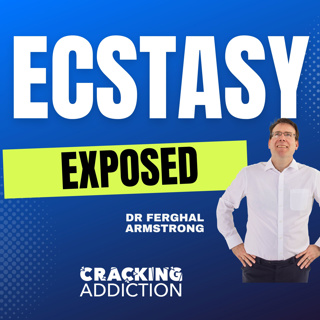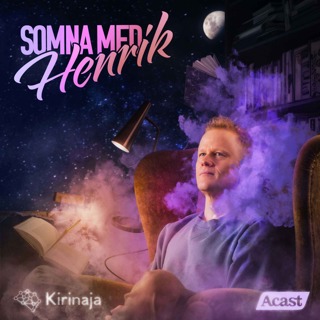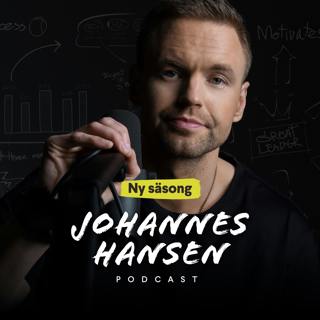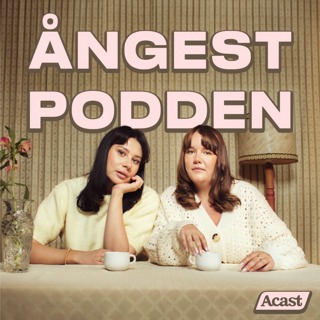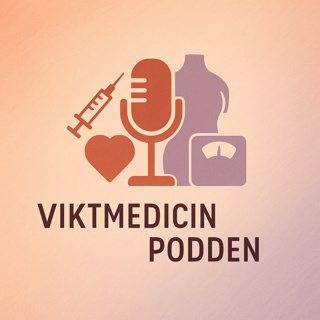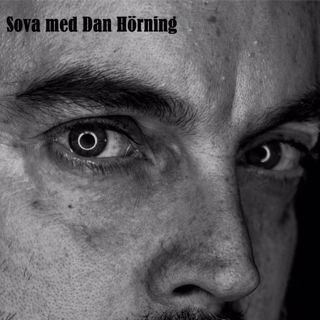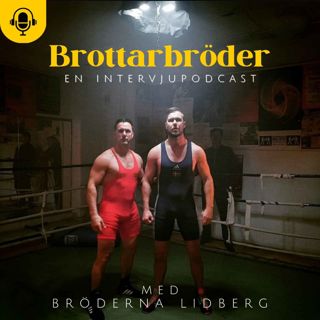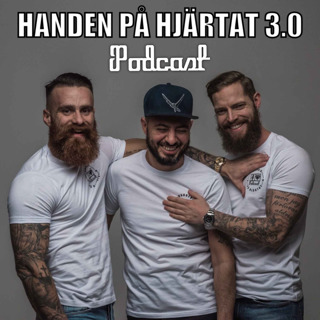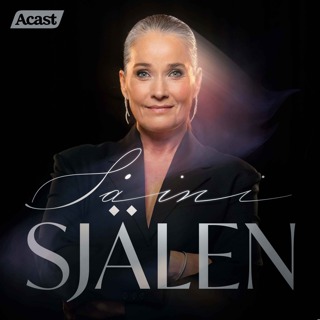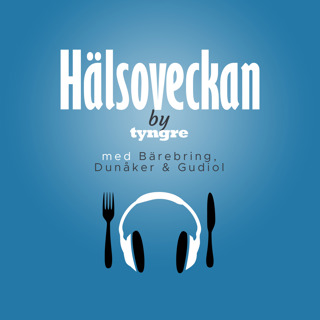
Understanding Lethality in Family Violence: Unveiling Risk Factors
In this serious and thought-provoking episode of "Cracking Addiction," Dr. Ferghal Armstrong and Mr. Stephen Heard shed light on evidence-based risk factors for lethality in family violence. They address the complexities faced by clinicians when dealing with female victims and emphasise the importance of understanding their resilience strategies. The episode explores the heightened risks during separation, with violence often escalating afterward. Herd stresses the need to prioritise safety by connecting victims with the police and relevant support services. They discuss the legal obligations associated with intervention orders, aiming to make clients aware of the protection they provide. The conversation delves into self-harm and suicide attempts by perpetrators, highlighting their controlling behaviours and the potential for murder-suicide. They caution against underestimating the significance of access to weapons in assessing risk. The discussion also touches upon factors like unemployment and drug misuse, which can amplify the severity and frequency of family violence. The episode concludes with a reminder to clinicians about the importance of planning for family violence and the role of distractions in reducing risk. Dr. Armstrong expresses gratitude to Steve Herd for his insights, leaving viewers with a deep understanding of the urgent need for proactive interventions. Content Warning: The episode contains discussions on sensitive topics such as domestic violence, self-harm, suicide, and murder-suicide. Viewer discretion is advised.
28 Juni 202318min
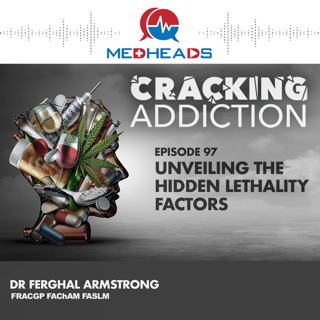
Unveiling the Hidden Lethality Factors in family violence
In this thought-provoking episode of Cracking Addiction, Dr Ferghal Armstrong and Steve Herd delve into the grim reality of family violence, focusing on the evidence-based risk factors for lethality. With a serious tone, they shed light on the Common Risk Assessment Framework, which highlights factors that significantly contribute to the risk of lethality in domestic abuse cases. Drawing attention to the alarming statistics, the hosts reveal the distressing truth that more than one woman per week in Australia falls victim to fatal violence at the hands of a current or former partner. As the discussion unfolds, Ferghal and Steve underscore the importance of understanding high lethality factors in family violence, particularly the patterns of escalating violence. Steve Herd educates the audience about the chilling escalation of violence against women by partners, wherein physical abuse intensifies from a mere slap to a punch, and sometimes to a devastating push. Ferghal Armstrong emphasises the grave nature of strangulation as the most significant physical risk factor in these cases. Astonishingly, victims of family violence often fail to disclose incidents of strangulation, further complicating the identification and prevention of lethal outcomes. The hosts shine a light on the often-overlooked risk factor of choking, revealing how victims may not openly admit to experiencing strangulation. Dr Ferghal explains that strangulation poses a risk not only to lethality but also to significant morbidity. Shockingly, just 15 seconds of strangulation with a firm handshake grip strength is enough to cause urinary incontinence, while a mere 30 seconds can result in fecal incontinence. The episode explores the aftermath of family violence, emphasising that women who have experienced such abuse may downplay their ordeal but later recall waking up to find themselves wet or soiled. Furthermore, Ferghal Armstrong and Steve Herd shed light on the extensive damage strangulation can inflict, including harm to brain arteries, the thyroid gland, cartilage, and the voice box. This comprehensive discussion reveals the range of associated morbidities and illnesses, underscoring the urgent need to recognise and address strangulation as a high-risk factor that is often downplayed or misunderstood. As the episode concludes, Ferghal Armstrong and Steve Herd leave the audience with a heightened awareness of the hidden dangers within family violence, urging society to take a stand against this pervasive issue and prioritise the safety and well-being of those affected. Note: The content described in the episode summary is of a serious nature, focusing on the severity and impact of family violence. The tone of the description reflects this seriousness and aims to raise awareness about the subject matter.
21 Juni 202320min
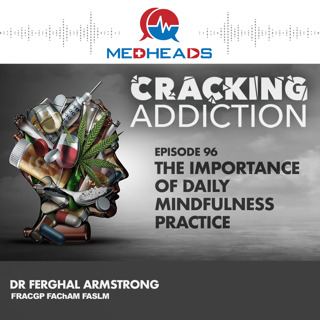
10 Minutes a Day: The Importance of Daily Mindfulness Practice for Your Mental Health
In this informative episode, Dr. Ferghal Armstrong and Dr. Laura J. Petracek discuss the power of mindfulness and meditation in regulating our emotions. They explore the concept of mindfulness, which involves paying attention to the present moment without worrying about the past or future, and they explain how this can lead to decreased physiological responses and a lower heart rate. They also delve into the differences between mindfulness and meditation, and how both techniques can benefit the brain by increasing the size of certain areas and strengthening connections between them. Dr. Armstrong emphasises the importance of daily mindfulness practice, even if it's just for a few minutes, to build a strong foundation. Dr. Petracek agrees that it can be challenging but believes it sets the tone for a better day. They also touch on the non-judgmental aspect of mindfulness and how it can be incorporated into therapy, such as dialectical behaviour therapy (DBT). This video is a great resource for anyone interested in learning more about the benefits of mindfulness and meditation for emotional regulation. So, sit back, relax, and join Dr. Armstrong and Dr. Petracek as they guide you through the world of mindfulness and its many benefits. Don't forget to hit the like button and subscribe to our channel for more informative episodes!
14 Juni 202316min
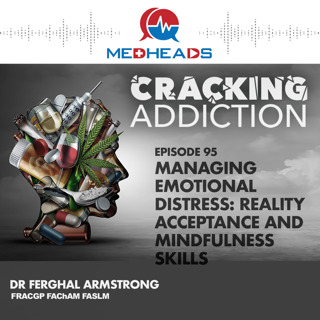
Managing Emotional Distress: Reality Acceptance and Mindfulness Skills
In this episode of Cracking Addition, Dr. Ferghal Armstrong and Dr. Laura J. Petracek discuss the important topic of managing emotional distress through reality acceptance and mindfulness skills. They delve into the concept of reality acceptance and explain how it involves accepting the situation for what it is, which ultimately causes less suffering. They also stress the importance of being responsive rather than reactive, and the space between event and response where a choice can be made.Furthermore, they highlight the significance of mindfulness and meditation in helping to build the pause button and respond instead of reacting. Through their discussion, they emphasise how reality acceptance can help people cope with adversity and lessen their suffering. They caution against beating oneself up and hating oneself into acceptance, as this can lead to depression and feeling stuck.Dr Armstrong shares some interesting quotes from literature and pop culture that suggest anxiety is a necessary part of life. Dr. Petracek encourages Dr. Armstrong to practice reality acceptance skills as a way of retraining the brain. They share personal examples of reality acceptance and being present in the current moment.This episode provides valuable insights into how to manage emotional distress through reality acceptance and mindfulness skills. Don't miss out on this informative and thought-provoking discussion.Discussions and comments in our videos are for informational purposes only and should not replace the advice of your medical professional. Please consult with your doctor before making any changes to your medical treatment or lifestyle.Latest Blogshttps://www.meducate.com.au/blogAbout Meducate ®Meducate provides online education for doctors, clinicians, health professionals and the public.See the website to browse the many different talks and courses available https://www.meducate.com.au
7 Juni 202316min
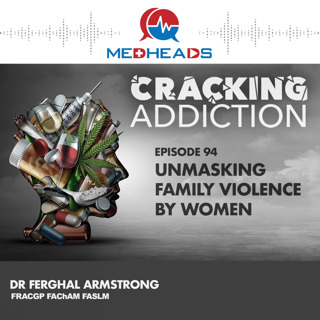
Beyond Stereotypes: Unmasking Family Violence by Women - Genuine Victims vs. Victim Stancing
In this thought-provoking Cracking Addiction episode, Dr Ferghal Armstrong and Steve Herd delve into the complex issue of how alcohol intersects with family violence. From the perspective of both the perpetrator and the victim of family violence, they explore the use of victim blaming and victim numbing to justify drinking in a family violence context. They also discuss the use of alcohol and drugs as a form of coercion in family violence and how access to treatment can be an issue.Dr Ferghal Armstrong and Steve Herd also discuss the prevalence of family violence perpetrated by women on men and how to distinguish between genuine victims and those who are victim stancing. They emphasise the importance of understanding the power dynamics in a relationship and the need to believe the victim's story.The definition of family violence, which includes a power and control imbalance, fear on the part of both sides, and the need for men to be aware of their safety when they go out, is also explored. The video highlights the importance of treating clients with unconditional positive regard and not laying blame on men who use family violence.The conversation also touches on the need for more agility in delivering services to victims of family violence to prevent avoidable deaths. The discussion ends with the importance of working with perpetrators of family violence to develop skills in identifying and motivating clients to seek help.If you're interested in understanding the complex intersection of alcohol and family violence, this video is a must-watch.Discussions and comments in our videos are for informational purposes only and should not replace the advice of your medical professional. Please consult with your doctor before making any changes to your medical treatment or lifestyle.Latest Blogshttps://www.meducate.com.au/blogAbout Meducate ®Meducate provides online education for doctors, clinicians, health professionals and the public.See the website to browse the many different talks and courses available https://www.meducate.com.au
31 Maj 202321min
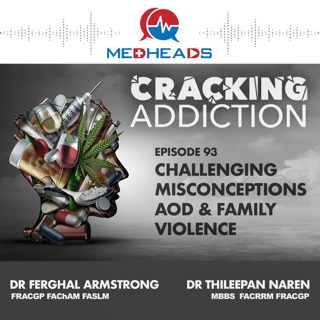
Challenging Misconceptions: AOD Use ≠ Elimination of Family Violence
In this thought-provoking episode of Cracking Addiction, Dr Ferghal Armstrong and Steve Herd delve into the complex intersection between AOD (alcohol and other drugs) use and family violence. The duo challenges the common misconception that stopping AOD use would automatically eliminate family violence. According to Armstrong and Herd, family violence is a long-term set of behaviours that require a comprehensive approach to tackle effectively.The discussion also covers the broader picture of family violence, including the personality traits and skills of the perpetrator, such as narcissism, lack of empathy, and cognitive ability. While Armstrong suggests that IQ does not increase or decrease the risk of family violence, Herd argues that people with disabilities have a greater chance of experiencing and using family violence.The episode also touches on the issue of gender inequality as a risk factor for using violence, as well as why people choose to stay in abusive relationships. Armstrong and Herd emphasise that the perpetrator is solely responsible for family violence, and supporting the situation better involves identifying and focusing on the perpetrator's behaviours.The duo also addresses the role of alcohol in family violence, debunking the notion that alcohol fuels violence. They argue that alcohol absolves perpetrators of responsibility and gives them permission to relapse long before it occurs.The episode concludes with a discussion of the importance of treating clients with unconditional positive regard and not laying blame on men who use family violence. Armstrong and Herd highlight the need to be more agile in the delivery of services to victims of family violence and the importance of believing their stories. This insightful video offers a fresh perspective on the intersection between AOD use and family violence and offers practical solutions for addressing this pressing issue.Discussions and comments in our videos are for informational purposes only and should not replace the advice of your medical professional. Please consult with your doctor before making any changes to your medical treatment or lifestyle.Latest Blogshttps://www.meducate.com.au/blogAbout Meducate ®Meducate provides online education for doctors, clinicians, health professionals and the public.See the website to browse the many different talks and courses available https://www.meducate.com.au
24 Maj 202318min
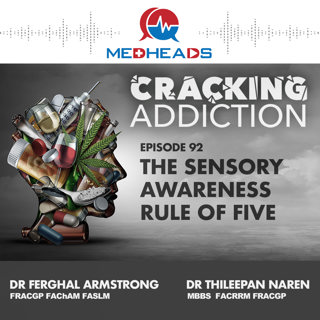
The Sensory Awareness Rule of Five
The Sensory Awareness Rule of Five is a technique that involves shifting one's focus from distressing thoughts or emotions to neutral sensory input. By focusing on what we can see, hear, feel, smell, and taste, we can ground ourselves in the present moment and reduce the intensity of our distress. This technique can be particularly helpful for individuals who experience re-experiencing symptoms associated with PTSD. By focusing on neutral stimuli, we can shift our attention away from distressing memories or flashbacks and regain a sense of control.To use this technique, you can start by taking a few deep breaths and then focus on the present moment. What can you see around you? What sounds can you hear? What sensations can you feel in your body? What smells can you detect? What tastes can you identify? Take a few moments to observe these neutral sensory inputs and allow yourself to become fully present in the moment. This can help you to calm down and reduce the intensity of your distress.Improve the Day MnemonicThe "Improve" the day system is a useful intervention for managing distress that involves focusing on six areas of our lives that can improve our overall well-being and reduce distress. By implementing small changes in these areas, we can improve our mood, reduce distress, and enhance our overall well-being.The acronym "Improve" stands for:Imagery: This involves using visualization techniques to imagine positive outcomes or situations. By visualizing positive outcomes, we can create a sense of hope and optimism. For example, if we are feeling distressed about an upcoming presentation, we can visualize ourselves giving a successful presentation and receiving positive feedback from our audience. This can help us feel more confident and less anxious about the upcoming event.Meaning: This involves identifying activities or experiences that give our lives meaning and purpose. When we engage in activities that are aligned with our values and beliefs, we experience a sense of fulfillment and satisfaction. For example, if we value helping others, we can engage in volunteer work or donate to a charitable organization. This can give us a sense of purpose and meaning, which can help reduce distress.Prayer: This involves engaging in spiritual or religious practices that provide comfort and support. For individuals who have a spiritual or religious practice, engaging in prayer or meditation can provide a sense of comfort and support. This can help reduce distress and provide a sense of connection to something larger than ourselves.Relaxation: This involves engaging in activities that promote relaxation and reduce stress, such as deep breathing, meditation, or yoga. When we are stressed or anxious, our body responds by releasing stress hormones, such as cortisol and adrenaline. By engaging in relaxation techniques, we can reduce the amount of stress hormones in our body and promote a sense of calm and relaxation.One thing: This involves identifying one small thing we can do each day to improve our mood or well-being. This can be something as simple as taking a few minutes to listen to our favorite song, going for a walk, or calling a friend. By focusing on one small thing each day, we can create a sense of accomplishment and positivity, which can help reduce distress.Vacation: This involves taking time off from work or other responsibilities to engage in enjoyable activities or travel. Vacations provide an opportunity to relax, recharge, and engage in activities that bring us joy and fulfillment. By taking time off from our regular routine, we can reduce stress and improve our overall well-being.In conclusion, the "Improve" the day system is a useful intervention for managing distress that involves focusing on six areas of our lives that can improve our overall well-being and reduce distress. By implementing small changes in...
17 Maj 202323min
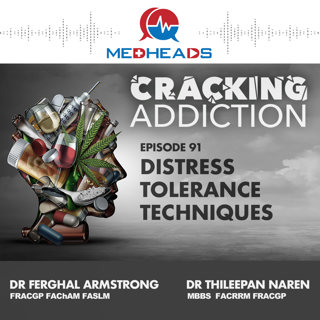
Distress Tolerance Techniques: TIPP
TIPP is a simple and effective acronym that stands for Temperature, Intense Exercise, Paced Breathing, and Progressive Muscle Relaxation. Each component of TIPP is designed to help us manage acute distress in a different way.Temperature: Exposure to cold temperatures has been shown to reduce sympathetic nervous system tone and increase parasympathetic nervous system tone. This means that cold exposure can help us calm down and feel more relaxed. To use this technique, you can try putting your face into a bucket of iced water for 30-60 seconds. While this may sound unpleasant, it can be a powerful tool for managing acute distress.Intense Exercise: Intense exercise can help disperse the adrenaline rush associated with acute distress. When we experience distress, our body releases adrenaline, which prepares us for fight or flight. However, if we do not use this adrenaline, it can build up and cause us to feel more anxious or agitated. Intense exercise can help us burn off this adrenaline and feel more calm and relaxed. To get the most benefit from intense exercise, it is important to reach our maximal heart rate. Our maximal heart rate is calculated as 220 minus our age. For example, if you are 30 years old, your maximal heart rate would be 190 (220-30=190). To get the most benefit from exercise, we should aim to achieve 90% of our maximal heart rate for 30-second bursts. This can increase our fitness and also reduce our emotional distress.Paced Breathing: Paced breathing is a technique that involves slowing down our breathing to help us feel more calm and relaxed. To use this technique, we should inhale for 4 seconds, hold our breath for 4 seconds, and then exhale for 4 seconds. This can be repeated for several minutes until we feel more calm and relaxed.Progressive Muscle Relaxation: Progressive muscle relaxation is a technique that involves tensing and then relaxing different muscle groups in our body. This can help us release tension and feel more relaxed. To use this technique, we should tense our muscles for 5-10 seconds and then relax them for 10-20 seconds. This can be repeated for several minutes until we feel more relaxed.Discussions and comments in our videos are for informational purposes only and should not replace the advice of your medical professional. Please consult with your doctor before making any changes to your medical treatment or lifestyle.Latest Blogshttps://www.meducate.com.au/blogAbout Meducate ®Meducate provides online education for doctors, clinicians, health professionals and the public.See the website to browse the many different talks and courses available https://www.meducate.com.au
11 Maj 202320min
